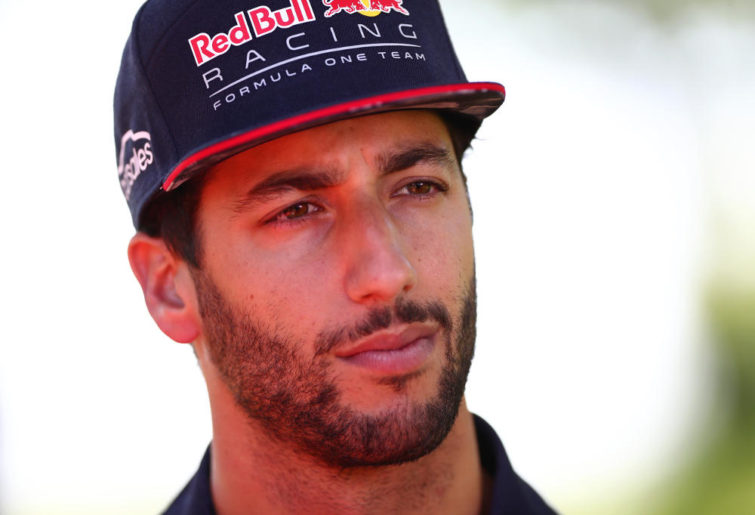Fernando Alonso's future is secure, now it's Lance Stroll's time to deliver for Aston Martin
It’s time that serious questions are asked of his Lance Stroll and his future in the team.
Who’d have thought five years ago that a sport as exclusive as Formula One, would open its doors to the possibility of a documentary delving into every facet of a season, previously unseen during a regular live telecast.
Little would it have been imagined of during the previous commercial rights regime, which was deposed at the end of 2016, that Netflix would stream a series that documents the narrative of the 2018 season.
‘Drive to Survive’ was announced twelve months ago ahead of the Australian Grand Prix and was set to follow the 2018 season and the stories of eight out of the ten teams competing. On the eve of 2019’s curtain-raising event in Melbourne – fans and viewers worldwide have been captivated by the ten-part series.
Rather than being a typical documentary with an intention to educate viewers unfamiliar with the high-speed sport about its basics, ‘Drive to Survive’ immediately throws one into the deep end of the competition and delving into a side of Formula One previously not available to the public.
Formula One is too often accused of being encapsulated in a bubble and its exclusivity cements that notion, given that appearance wise the sport only caters to the extremely wealthy – confirmed sponsors such as Rolex. Drivers are perceived to be far too sterile and PC, in contrast to their gladiatorial ilk from yesteryear.
However, from the opening episode of the series that perception can be thrown out immediately with the intensity seen inside the Haas Formula One Team during their hero to zero Australian Grand Prix last year.
Scenes of jubilation after their best qualifying performance in only their third year in the sport, were met with disdain and heartbreak on race day with not one, but two tyre failures following pit-stops for both Romain Grosjean and Kevin Magnussen – throwing away what would likely have been fourth and fifth place finishes.
Team boss Guenther Steiner, who arguably stole the series with his brutal honesty and insight of agony and ecstasy of what it’s like being a Team Principal, was shown after the disastrous race over the phone with Haas’ owner in Gene Haas and summarised how they all went from looking like heroes to looking like ‘a bunch of w*nkers’.
Steiner’s frustrations with the lacklustre performances of Grosjean is also documented without censor too throughout the series, as Haas’ battle for fourth in the constructor’s championship with Renault becomes a focal point.
This never seen before element of Formula One has captivated many who have tuned in to view ‘Drive to Survive’, even those who aren’t fans of the sport.
This whole other side to racing, when the helmets are off and the drivers are not in the car would have been a shock to many.
The training regimes for the drivers, who possess fighter pilot-like senses but also are fit to compete in triathlons, is quite brutal and intense.
Particularly when they must contest a race like the Singapore Grand Prix – which is the most physically demanding of the 21.
Politics are also a huge element of Formula One and having the well-publicised divorce between Red Bull Racing and their previous engine supplier in Renault featured in the series, brought to it another tension to be dealt with.
Sniping between Red Bull’s Christian Horner and Renault’s Cyril Abiteboul was entertaining as much as it would have been fierce.

Formula One driver Daniel Ricciardo of Australia during his time with Red Bull Racing. (Photo by Dan Istitene/Getty Images).
Emotionally too, the series is quite gripping and that is at its highest when Ferrari recruit in Charles Leclerc’s rise to Formula One is recounted.
The loss of his godfather in Jules Bianchi who tragically passed away in 2015, following a horrific accident at the Japanese Grand Prix the year before and then the death of Leclerc’s father makes for a touching story around the 21-year old.
The breathtaking cinematography adds to the drama further, making the series a complete package of a visual masterpiece and a narrative which can hook an audience in for binge watching.
‘Drive to Survive’ ultimately is a reminder for those bona-fide Formula One fans of how great the sport is. As frustrating as it can be at times with the lack of competition and the dominance of a single team, those who truly love the sport will have an enduring passion.
What the series has achieved is that it has shown audiences who don’t watch Formula One, the reasons why we have that desire to these 20 drivers for their ten teams do battle week in and week out, as well as year in and year out.